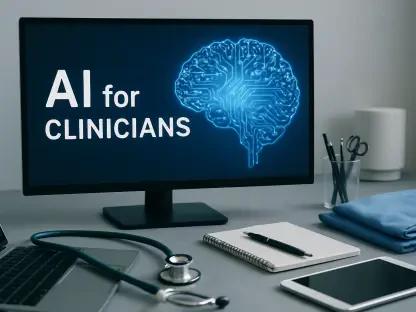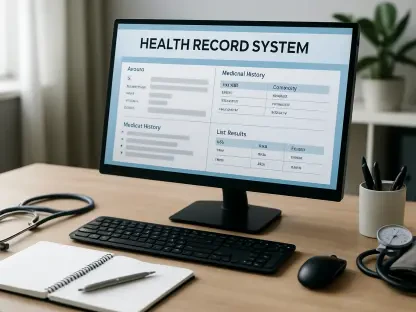In the ever-evolving landscape of health care, the quest for true interoperability remains one of the most pressing challenges. Health care systems today require integrated supply chains underpinned by advanced information technologies. However, achieving seamless interoperability among the myriad devices and systems in use poses a complex task. As technology rapidly progresses, there is a growing gap in research that systematically examines health care interoperability as a comprehensive domain. This gap requires bridging to develop a sustainable, patient-centric value chain. By introducing a holistic taxonomy within the health care value chain context, new pathways for standardization and innovation can be envisioned. This approach is vital to facilitating improved collaboration across different platforms, ultimately working toward enhancing patient outcomes and overall system efficiency.
The Role of Emerging Technologies
Emerging technologies such as IoT, blockchain, and electronic health records (EHR) play integral roles in shaping the future of health care interoperability. There is a heightened focus on these tools, as demonstrated by two primary clusters identified in recent studies. One cluster emphasizes the importance of EHR and eHealth, which are pivotal for recording and managing patient information efficiently. EHR systems enable clinicians to access comprehensive patient data swiftly, aiding in accurate diagnosis and treatment decisions. The second cluster highlights the influence of IoT and blockchain technologies, underscoring their potential to revolutionize data sharing and security. IoT facilitates real-time data collection from medical devices, offering valuable insights into patient health. Simultaneously, blockchain technology provides a robust solution for secure data transaction, ensuring data integrity and privacy across networks.
An intriguing aspect of current research is the application of both quantitative and qualitative methodologies. A systematic review approach involves bibliometric techniques such as cluster, factor, and network analysis. These techniques reveal the structural knowledge embedded in interoperability studies, effectively showcasing how different technologies interplay within the health care system. Advanced analysis tools help identify and categorize the relationships between various sectors, painting a comprehensive picture of the emerging technological landscape. This insightful data can guide stakeholders in making informed decisions as they invest in infrastructure conducive to enhanced interoperability. As health care organizations strive to incorporate these cutting-edge technologies, establishing standardized protocols and ensuring collaboration becomes crucial for the realization of an integrated health care ecosystem.
Building an Integrated Health Care Ecosystem
Moving toward an integrated health care ecosystem requires a structured and systematic approach. The development of a comprehensive taxonomy featuring four higher-order facets—object, source, ambit, and content—proves essential. This taxonomy captures the diversity and complexity inherent in health care interoperability issues. The ‘object’ facet pertains to the information and data being shared across systems, while the ‘source’ identifies the mechanisms or platforms involved. ‘Ambit’ describes the spatial domain or area covered by interoperability solutions, and ‘content’ highlights the technology employed in these processes. Such a taxonomy offers a coherent framework for understanding the dynamism and interplay between these facets, enabling practitioners to craft strategies tailored to specific interoperability challenges.
As the health care industry embraces the centrality of eHealth, the focus on sustainable integration and patient-centric delivery is paramount. Thus, consolidating diverse perspectives into a unified understanding facilitates better alignment of goals and objectives across health care settings. The emphasis on patient-centric delivery aligns stakeholders’ interests with improved health outcomes. By enhancing interoperability, health care professionals can achieve seamless information exchange and collaboration, leading to efficient use of resources and improved therapeutic interventions. Fostering partnerships and learning among health care providers further strengthens efforts to ensure sustained advancements in the interoperability of health care systems, fundamentally transforming how care is delivered to patients globally.
Future Directions for Health Care Interoperability
Emerging technologies such as IoT, blockchain, and electronic health records (EHR) are crucial in shaping the future of health care interoperability. Recent studies identified two main focus areas: EHR and eHealth, which are essential for efficiently managing and recording patient data. EHR systems allow clinicians quick access to comprehensive information, aiding in accurate diagnoses and treatment decisions. The second focus area is the role of IoT and blockchain technologies, showcasing their potential to revolutionize data sharing and enhance security. IoT enables real-time data collection from medical devices, providing valuable insights into patient health. Meanwhile, blockchain offers a secure method for data transactions, ensuring integrity and privacy.
Current research uses both quantitative and qualitative methodologies, employing systematic reviews with bibliometric techniques like cluster, factor, and network analysis. These techniques uncover structural knowledge in interoperability studies, showing how technologies interact within the health care system. As organizations integrate these technologies, establishing standards and fostering collaboration become vital to achieving a cohesive health care ecosystem.









